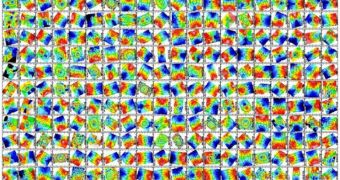An international group of astronomers is currently working towards gaining a better understanding of the types of galaxies that exist in the Universe. Their goal is to revise the Hubble Turning Fork, the basic systems used to classify galaxy types.
Famous astronomer Edwin Hubble proposed the earliest model of classification back in 1926, basing it on observations of the three main types of galaxies telescopes at the time could see. This included elliptical, spiral and lenticular galaxies.
When experts wrote down Hubble's system, they noticed that the model gave the appearance of a fork, hence its name. Decades later, astronomers were still using the famed scientist's approach to classifying cosmic formations. But the new collaboration is now calling the model into question.
Twenty-five American and European astronomers are a part of the ATLAS3D Project, an endeavor meant to combine a survey conducted in multiple wavelengths with a theoretical model of galaxies.
Experts focus their investigation on a carefully selected, volume-limited sample of 260 early-type galaxies, which they consider to be the most relevant for creating a new classification scheme.
One of the primary instruments used in this investigation is the 4.2-meter William Herschel Telescope's SAURON spectrograph, which is based in La Palma. With it, scenarists can create 2D kinematics of the atomic, molecular and ionized gases inside the sample galaxies.
They can also create colored images of the same structures. Together, these datasets provide them with what they need to augment computer models showing galaxy formation and evolution over time.
Recently, the collaboration gained the ability to see the galactic rotation. This basically allows them to look at any galaxy from any point of view they select. Additionally, they can even separate face-on galaxies from their edge-on spheroid galaxy counterparts.
“Slow and fast rotators tend to be classified as ellipticals and lenticulars, respectively, but the contamination is strong enough to affect results solely based on such a scheme: 20 per cent of all fast rotators are classified as ellipticals, and more importantly 66 per cent of all ellipticals in the ATLAS3D sample are fast rotators.” experts report.
“Our complete sample of 260 [galaxies] leads to a new criterion to disentangle fast and slow rotators which now includes a dependency on the apparent ellipticity. It separates the two classes significantly better than the previous prescription,” they add.
The research allowed the team to propose that spheroid galaxies actually belong to the spiral galaxy classification, an idea that is currently being tested and validated by independent teams, Universe Today reports.

 14 DAY TRIAL //
14 DAY TRIAL //